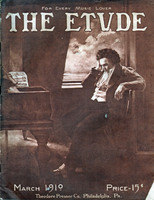BY JAMES FRANCIS COOKE
(From “The Young Folks’ Standard History of Music.)
[The following is an arrangement of Lesson 36 from the work named above, which is now in course of preparation. The book as a whole, is divided into forty short story-lessons, each one designed to give in a simple and direct manner one of the steps in the advancement of musical history from the earliest times to the present day. A few other chapters suitable for magazine use will appear in The Etude. This work is intended to supply the wide demand for a practical. interesting and “teachable” history of music for children and young people and to enable teachers and club leaders who have had no previous experience in teaching musical history to give either individual or class lessons successfully.]
Let us turn our attention for a short time to composers who are best known for their efforts as makers of smaller musical art works. We cannot measure an art work by its size. A painting by Michael Angelo covering a whole wall is not necessarily greater because of its size than a picture by the artist Velasquez, which might only be a foot square. Thus the “Songs Without Words” of Mendelssohn and the shorter pieces of Chopin and Brahms are in many cases greater artistically than some aspiring symphonies by less able composers. The following composers have in some cases written with marked ability in the larger forms, but their smaller compositions have brought them their widest reputation:
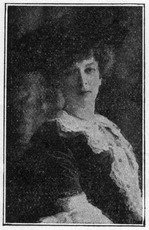 One of the best-known writers of shorter compositions for the piano is Cécile Chaminade (Shahm’- in-ahde) (born in Paris, 1861). She is the first musician of her sex to attain wide renown as a composer. Clara Schumann, Robert Schumann’s wife, was well known as a virtuoso and wrote several excellent works, but they never met anything like the general popular appreciation that has greeted the charming piano pieces of Chaminade. She was a pupil of Le Couppey, Savard, Marsick and Benj. Godard. Her best-known work is the ballet-symphony “Callirhöe,” which was filled with such original and fascinating musical ideas that it won her wide fame. As a composer of songs Chaminade stands with the best composers of her native country. She has toured abroad and in America with great success.
One of the best-known writers of shorter compositions for the piano is Cécile Chaminade (Shahm’- in-ahde) (born in Paris, 1861). She is the first musician of her sex to attain wide renown as a composer. Clara Schumann, Robert Schumann’s wife, was well known as a virtuoso and wrote several excellent works, but they never met anything like the general popular appreciation that has greeted the charming piano pieces of Chaminade. She was a pupil of Le Couppey, Savard, Marsick and Benj. Godard. Her best-known work is the ballet-symphony “Callirhöe,” which was filled with such original and fascinating musical ideas that it won her wide fame. As a composer of songs Chaminade stands with the best composers of her native country. She has toured abroad and in America with great success.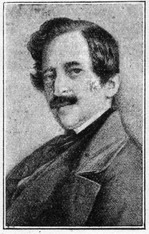 Franz Bendel (Ben’-del) (born in Schoenlinde, Bohemia, 1833; died 1874). Was a pupil of Franz Liszt, who was highly regarded as a pianist. In 1862 he became one of the leading teachers in Kullak’s Academy, in Berlin, and wrote many pieces which are valuable to some students, since they are melodious, yet not difficult.
Franz Bendel (Ben’-del) (born in Schoenlinde, Bohemia, 1833; died 1874). Was a pupil of Franz Liszt, who was highly regarded as a pianist. In 1862 he became one of the leading teachers in Kullak’s Academy, in Berlin, and wrote many pieces which are valuable to some students, since they are melodious, yet not difficult.Benjamin Godard (Goh’- dard) (born in Paris, 1849; died 1895). Was a most talented and successful composer of pieces in the smaller forms. Almost everything Godard had to say in his music was interesting, and his compositions are filled with lovely melodies and attractive rhythmic forms. At first he was a violinist and played in public at the age of nine. Later he studied with the great violinist, Vieuxtemps. His first published work was a violin sonata, and he followed this with much attractive chamber music. Godard wrote eight operas, of which the best known is “Jocelyn.” He also wrote many pieces for the orchestra and some very fascinating pieces for piano, including the immensely popular “Second Mazurka.”
 Christian Sinding (Sind’- ing) (born in Kongsberg, Norway, 1856). Pupil of Reinecke at Leipsic Conservatory. Studied later in Berlin, Munich and Dresden. Although Sinding is best known by his poetical and artistic piano pieces, such as the famous “Frühlingsrauschen” (Rustle of Spring), he is a composer of great ability in the larger forms, and has written a symphony, a pianoforte concerto and many works for orchestra that rank with the best of their kind.
Christian Sinding (Sind’- ing) (born in Kongsberg, Norway, 1856). Pupil of Reinecke at Leipsic Conservatory. Studied later in Berlin, Munich and Dresden. Although Sinding is best known by his poetical and artistic piano pieces, such as the famous “Frühlingsrauschen” (Rustle of Spring), he is a composer of great ability in the larger forms, and has written a symphony, a pianoforte concerto and many works for orchestra that rank with the best of their kind.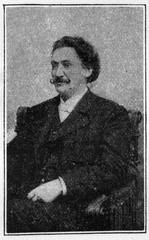 Ludwig Schytte (Skyt’ tay) (born in Aarhuus, Denmark, 1850; died 1909). Was at first a druggist, but at twenty decided upon a musical career. His teachers included Neupert, Gade and Liszt. In 1887 he went to Vienna as a concert pianist, composer and teacher, and has written a great number of original and charming pieces for the piano, of which the most popular is his “Berceuse” (Lullaby).
Ludwig Schytte (Skyt’ tay) (born in Aarhuus, Denmark, 1850; died 1909). Was at first a druggist, but at twenty decided upon a musical career. His teachers included Neupert, Gade and Liszt. In 1887 he went to Vienna as a concert pianist, composer and teacher, and has written a great number of original and charming pieces for the piano, of which the most popular is his “Berceuse” (Lullaby).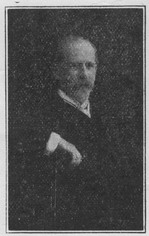 Eduard Schütt (Scheet) (born in St. Petersburg, 1856). Like Sinding, is known by his lighter works, but has written masterly works in larger forms, his pianoforte concerto in G minor being among his best compositions. Schütt was a pupil of the St. Petersburg Conservatory and the Leipsic Conservatory, and in later years became a deep personal friend of Leschetizky, in Vienna, where he resides. Schütt’s “Carnival Mignon” is an extremely attractive concert number, and his valse, “A la Bien- Aimée,” is one of the most popular piano compositions ever written.
Eduard Schütt (Scheet) (born in St. Petersburg, 1856). Like Sinding, is known by his lighter works, but has written masterly works in larger forms, his pianoforte concerto in G minor being among his best compositions. Schütt was a pupil of the St. Petersburg Conservatory and the Leipsic Conservatory, and in later years became a deep personal friend of Leschetizky, in Vienna, where he resides. Schütt’s “Carnival Mignon” is an extremely attractive concert number, and his valse, “A la Bien- Aimée,” is one of the most popular piano compositions ever written.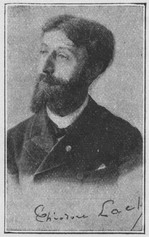 Theodore Lack (Lahk) (born in Quimper, France, 1846). Studied at the Paris Conservatory with Marmontel and Bazin, and now resides in Paris as a teacher and a composer. He became an officer of the French Academie in 1881 and an officer of public instruction in 1887. His known works are limited to very attractive salon (parlor) pieces, of which the most successful is perhaps the “Idylle,” in A flat, although the following pieces are widely used by teachers: “Cabaletta,” “Caprice Elegant,” “Masovia,” “Song of the Brook,” “Pizzicato,” “Valse Arabesque” and “Calm of the Sea.”
Theodore Lack (Lahk) (born in Quimper, France, 1846). Studied at the Paris Conservatory with Marmontel and Bazin, and now resides in Paris as a teacher and a composer. He became an officer of the French Academie in 1881 and an officer of public instruction in 1887. His known works are limited to very attractive salon (parlor) pieces, of which the most successful is perhaps the “Idylle,” in A flat, although the following pieces are widely used by teachers: “Cabaletta,” “Caprice Elegant,” “Masovia,” “Song of the Brook,” “Pizzicato,” “Valse Arabesque” and “Calm of the Sea.”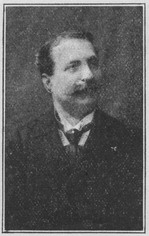 Paul Wachs (Vahks) (born in Paris, 1851). Was also a pupil of the Paris Conservatory, where he studied with Masse, Marmontel, César Franck and Duprato. In 1872 he won the first prize for organ playing. His brilliant pianoforte pieces, including the widely played “Shower of Stars,” have won him wide popularity. His “Etude Mignonnes” (Little Studies) are excellent for students in the second grade, and his “Rosy Fingers” and “Valse Etude” are frequently seen on programs of pupils’ recitals.
Paul Wachs (Vahks) (born in Paris, 1851). Was also a pupil of the Paris Conservatory, where he studied with Masse, Marmontel, César Franck and Duprato. In 1872 he won the first prize for organ playing. His brilliant pianoforte pieces, including the widely played “Shower of Stars,” have won him wide popularity. His “Etude Mignonnes” (Little Studies) are excellent for students in the second grade, and his “Rosy Fingers” and “Valse Etude” are frequently seen on programs of pupils’ recitals.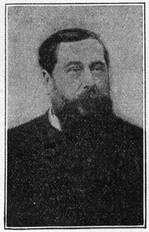 Leo Delibes (Day-leeb’) (born in St. Germain-du- Val, France, 1836; died 1891). Has written some of the most melodious and brilliant ballet music we possess. The ballet is a form of stage dance usually employed in connection with an opera. Sometimes ballets are given separately, and they often include pantomimes or plays accompanied by music and dancing but without singing. Delibes was a graduate of the Paris Conservatory, and later in life became Professor of Composition in that institution. Pieces from his captivating ballets, “Nalia,” “Coppelia” and “Sylvia,” are well-known through much-played pianoforte arrangements. Of his six operas the best known is the beautiful “Lakme.”
Leo Delibes (Day-leeb’) (born in St. Germain-du- Val, France, 1836; died 1891). Has written some of the most melodious and brilliant ballet music we possess. The ballet is a form of stage dance usually employed in connection with an opera. Sometimes ballets are given separately, and they often include pantomimes or plays accompanied by music and dancing but without singing. Delibes was a graduate of the Paris Conservatory, and later in life became Professor of Composition in that institution. Pieces from his captivating ballets, “Nalia,” “Coppelia” and “Sylvia,” are well-known through much-played pianoforte arrangements. Of his six operas the best known is the beautiful “Lakme.”LESSON 35.
1. Who was the first woman to attain international renown as a composer?
2. What instrument did Godard play?
3. Which pupil of Liszt became famous for his short pieces and afterwards taught in the Kullak Music School?
4. Give the name of an eminent Norwegian composer who has became famous for his shorter piano pieces.
5. What is Schütt’s most famous composition?
6. Give the name of an eminent Danish composer who has written in smaller forms.
7. Where was Theodore Lack educated?
8. With which great organist did Paul Wachs study?
9. For what style of music is Delibes famous?
10. In which famous conservatory did Delibes become the teacher of composition?


